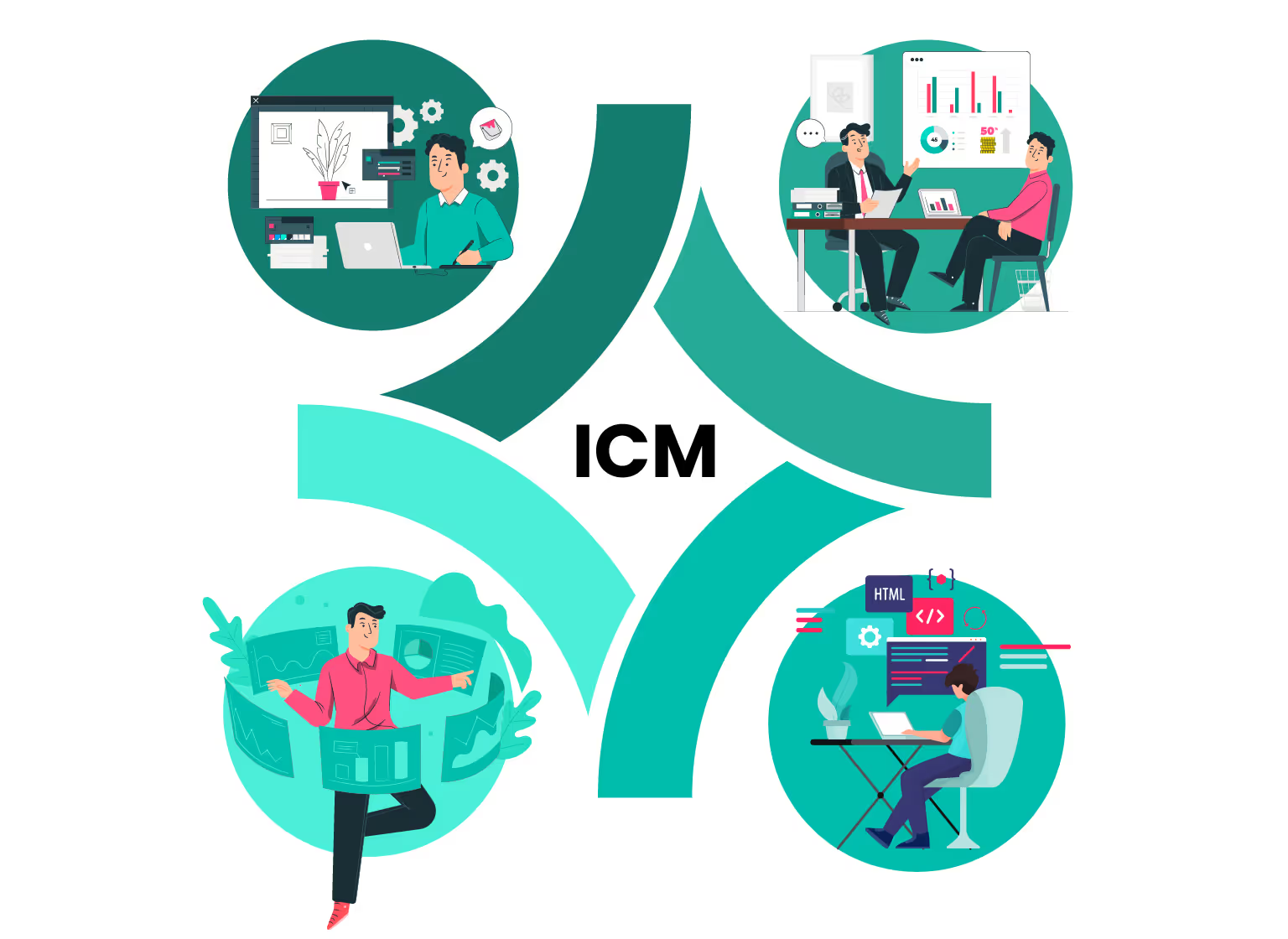
Blog
Deconstructing the Dilemma: Four easy-to-follow steps for ICM bliss!
August 25, 2022


Key Insights
It can be a little bit terrifying to look at all the intricate web that is IC. With so many factors for you to consider, you may be wondering what the first step is. Don’t worry, we got you!
A phased approach to ICM would entail-
- A Design Phase
- A Consultation Phase
- An Implementation Phase
- An ongoing Adjustment Phase
Let’s try to understand each of these phases in detail.
Design Phase -
Growth leaders need to understand their company’s unique pay philosophy and try to create plans that align with the organization’s-
- Value systems
- Goals
- Employee needs
Always remember that a plan that works for one organization may not work for you! Even so, it is also important to understand that some rules need to be followed in order to cook up the perfect IC recipe.
Consultation Phase-
Talk to all relevant stakeholders. Present your plan and actively seek feedback from-
- Your reps- Merely familiarizing yourself with your team members’ names and faces will not cut it. You need to actively engage with them on a daily basis to understand how they approach sales. Make it a point to talk to your team members about their selling styles, weaknesses, and strengths. Have a sit down with your team members in order to make them a part of this process. These sessions will help foster a two-way trust between you and those you lead resulting in a more transparent and ultimately more productive IC plan.
- Your counterparts from other departments- Being a lone wolf will not take you anywhere! Work in close collaboration with other departments, especially marketing and customer service. This inter-department approach will provide your team with the opportunity to understand your customer more intimately and consequently create a better plan.
- Your channel partners- Channel partners are important! There is no reason to exclude them from an IC plan. Talk to your channel partners about how they view compensation, incorporating sales channels in your incentive program development.
Armed with all this feedback, create a plan that works for all stakeholders.

Implementation Phase -
Implementation, particularly of Management by Objectives (MBO), is perhaps the most daunting part of ICM. Making sure that the plan runs smoothly is no piece of cake, and most managers struggle to keep up. However, it is not impossible to keep your IC plan healthy and running. Simple practices like these go a long way.
- Frequent and Accurate Reporting- Often, reports are made months after a financial year ends. And even when they are available, they are not audit-ready, making it hard for finance teams to work on them. It is therefore impossible for sales leaders to take bold decisions like changing their incentive compensation plans. This static approach can stifle business growth significantly. Sales leaders need to look at the macroscopic impact of inadequate reports and then make microscopic changes in the way data is collected and analyzed.
Let’s be clear though - not all data is good data. Ask yourself these three simple questions to make sure that the data you are collecting is the perfect raw material for a successful plan-
- Do you have enough data?
- Is your data accurate and trustworthy?
- Is your data uniform?
Visit this blog – Big Data and a Big Question- Are you still relying on annual reports – to read more about the importance of frequent and efficient reports and why sales leaders should adopt a data-driven strategy to combat challenges.
- Ongoing communication with your reps- Your IC plan is ultimately tailored for the rep. Therefore, a good IC plan should be rep friendly and allow them to track their performance. It should also make it easy for them to know how much they are earning and what they need to do in order to earn better. Keep your reps in the loop. A good way to do that would be through live presentations, FAQ docs and online resources like how-to videos.
Adjustment Phase -
After a few months, when your plan has been operational for a few months, it is necessary to call upon the relevant stakeholders for a review and feedback session. Think of it like a postmortem! Questions like these need to be addressed-
- What worked with the design?
- Where did the design fail to hit the mark?
- What are some of the gaps in the process?
- Are your systems outdated or are they able to keep up with your plan?
A natural progression in your IC plan design is natural. With this ever changing business ecosystem, your plan is bound to change. Good plans will have the potential to adapt to changing company goals, product launches and new market practices.
To learn more about how automating your ICM can help you keep up, book a demo with us!
ReKennect : Stay ahead of the curve!
Subscribe to our bi-weekly newsletter packed with latest trends and insights on incentives.
Thank you! Your submission has been received!
Oops! Something went wrong while submitting the form.
Your data is in safe hands. Check out our Privacy policy for more info











